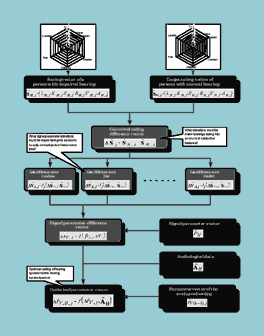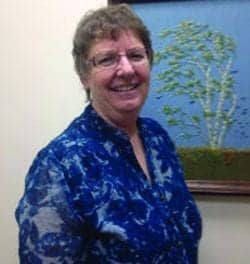As the author approaches his 65th birthday after 40 years in the hearing industry, it seems like a good time to reflect on where we are and speculate on how we got there here. The motivation for these reflections comes partly from three MarkeTrak studies1-3 which report:
- 80% of those who admit they need hearing aids don’t buy them;
- 40% of those who do buy hearing aids do not place themselves in the “satisfied” category;
- Hearing in noise is the largest improvement sought by those wearing hearing aids, and
- Improved sound quality is the second largest improvement sought by those wearing hearing aids.
Despite the importance of hearing in noise, only 20% to 30% of dispensing professionals obtain directional-microphone hearing aids for their patients. In contrast, most recommend the use of digital noise reduction even though, to our knowledge, no one has developed a digital noise reduction scheme that improves the ability to understand speech in 83 dB SPL babble (party) noise over and above the improved audibility some signal processing gives (improved audibility which could have been achieved with an improved fitting in the first place).
Dreschler’s data4 show that none of the popular digital noise reduction hearing aids he tested significantly improved speech intelligibility in cocktail party noise or car noise. This is not surprising, since one can argue that it is theoretically impossible to improve speech understanding in multi-talker babble by “noise reduction circuits” unless the noise reduction circuit can differentiate between talkers, and decide which talkers are noise and which talker is the desired signal. To paraphrase Villchur,5 the noise reduction circuit would need to identify each talker in order to avoid combining syllables and words from one talker with those from another.
Our experimental data on modern digital hearing aids recorded in an R-SPACE™ simulation6 of a noisy restaurant showed the same result: Our hearing-impaired subjects obtained higher intelligibility in noise with the original sound, only louder and without distortion (the amplified sound recorded from the open ear of the KEMAR® manikin) than with any digital noise reduction scheme (this is addressed in depth with Figures 7 and 8).
Perhaps as a result of our failure to significantly improve the hearing aid user’s ability to hear in high-level noise, the actual number of non-veterans with hearing loss who are being served appears to have declined in the last 10 years. Even when increasing VA sales and binaural usage are taken into account, new users as a percent of sales have dropped from 53% in 1989 to 32% in 2000.3 An increasing percentage of those needing hearing aids don’t come to us for help. And the percentage of satisfaction among those who do purchase hearing aids has not improved as we moved from analog to digital, and as the average selling price of hearing aids has nearly doubled.1
On the surface, these results don’t make sense. Technology has provided a dramatic increase in the theoretical capabilities of hearing aids. While the experiments described later in this article suggest that some excellent hearing aid designs are available today, it also appears that some modern designs provide neither good intelligibility in high-level noise nor exceptional sound quality.
These results would make sense, however, if four popular myths about hearing aids and hearing-impaired listeners have been influencing some hearing aid designs.
Four Popular Myths in Hearing Aid Design
Myth 1. Normal-hearing engineers cannot judge the fidelity of hearing aids because they don’t have a hearing loss.
Myth 2. Fidelity doesn’t matter to those with hearing loss because they can’t hear the difference anyway.
Myth 3. Intelligibility and fidelity are antagonistic: good signal processing for noise will necessarily sacrifice fidelity.
Myth 4. Good fidelity is impossible in hearing aids because of transducer limitations.
Figure 1. Effect of bandwidth on recognition of /s/ (adapted with permission from Stelmachowicz et al, 20017).
Do these myths matter? The myth that a 5-6 kHz bandwidth is adequate for good digital hearing aids appears to matter to children, according to the findings of Stelmachowicz et al.7 Hearing-impaired children tested on sibilants produced by a female talker obtained a 39 percentage-point increase in score when the bandwidth was increased from the 6 kHz bandwidth typical of modern digital hearing aids to a 9 kHz bandwidth (Figure 1).
Experiments
Myths are usually based on one or more experiences from the past. To find out if any of these myths is relevant today, we undertook a series of experiments involving both normal-hearing and hearing-impaired subjects.
Subjects included more than 60 normal-hearing audiologists (depending on the experiment) and 27 hearing aid wearers: 16 with sloping loss and 11 with flat loss. Both groups of hearing aid wearers participated in the intelligibility-in-noise experiment. Only the 16 sloping-loss subjects participated in the listening-test experiments. These subjects provided fidelity ratings, dollar-value ratings, and intelligibility-in-noise measurements. The mean and range of the audiograms of the hearing-impaired subjects are shown in Figures 2 and 3.
Figure 2. Average and range of better-ear audiogram of 16 subjects with sloping hearing loss.
Figure 3. Average and range of better-ear audiogram of 11 flat-loss subjects.
Experiment 1: Fidelity ratings. Hearing aid recordings were made through a new high-fidelity experimental hearing aid (with electronic damping, 16 kHz bandwidth, and an undistorted input-SPL capability exceeding 110 dB) and 6 other digital aids, and compared to the linear-aided open ear of the KEMAR manikin. Digital hearing aids involved in the study included products from (in alphabetical order) Audina, GN ReSound, Oticon, Phonak, Siemens, Starkey, and Widex. (Author’s note: The numbers in the graphs were assigned at random to these aids.) All aids were programmed using their manufacturer’s autofit option for a 40 dB flat loss, and recordings were made on a KEMAR manikin using a diffuse-field inverse filter. Recordings were made in the acoustically treated Etymotic Research Classroom or in R-SPACE,6 reproducing the spatially disperse 70 dBA SPL noise of Lou Malnati’s busy pizza restaurant in Elk Grove Village, Ill.
The fidelity ratings were obtained from A-B comparisons using live music. Two performing groups were employed: A string quartet and a piano trio. A string quartet provides a complex sound that makes a lack of frequency-response smoothness apparent. In a piano trio, the bass produces energy down to 40 Hz, while the brush on cymbals produces energy up to 16 kHz. For these experiments, the string quartet performed the same excerpt of Bach’s Brandenburg Concerto, No. 3 and Dvorak’s Americana. The piano trio played the same segment from Count Basie’s Lil Darling and from Thelonious Monk’s Straight No Chaser. The majority of the listening-test data were obtained on the Brandenburg Concerto and Lil Darling selections. Those data are reported here. (Author’s Note: The string quartet was comprised of 3 Chicago Symphony Orchestra (CSO) members (Joe Golan, principal second violin; Richard Ferrin, viola; and Loren Brown, cello) and 1 professional violinist (David Preves) who had previously soloed with the CSO. The jazz piano trio used in these recordings was comprised of 3 well-known Chicago-area jazz musicians: pianist Frank Winkler, bassist Rob Kassinger, and drummer Jack Cohn.)
For the recorded comparisons used in the listening tests, the first segment of music (Segment A) was a recording from the open ear of KEMAR, and the second segment (Segment B) was recorded through one of the hearing aids. As a check on the repeatability of the musicians and ratings, a later open-ear recording (Segment A’) was included in each set of the A-B comparisons as an A-A’ comparison.
The subjects were asked to rate on a 0% to 100% scale the fidelity or similarity of the sound between A and B, with these instructions: “If you can hear no difference between A and B, that is perfect fidelity and you should write down 100%. If you can’t imagine it would be possible to hear any worse reproduction than what you hear in B, write 0%. A score of 50% indicates ‘fair’.” As an indication of the consistency of the musicians and the reliability of the subject ratings, the A-A’ comparisons routinely obtained average fidelity ratings in the 90% range.
All recordings were obtained from the diffuse-field-inverse filtered output of an ER-11 microphone mounted in the right ear of the KEMAR manikin. Additional details about such listening tests can be found in Killion.8
Experiment 2: Dollar-value ratings. Palmer et al.9 introduced the use of dollar-value ratings for hearing aid evaluation at a time when there was a serious question about whether anyone would be willing to pay the $50 or more for a Class D amplifier. In their study, subjects were told to assume that they had a hearing loss and enough money to buy hearing aids, that hearing aids cost as much as $700, and to write down after each example how much they would be willing to pay for a hearing aid that sounded like the one they had just heard. Palmer et al.’s results showed that each percentage quality point was worth $6.75 on the average. Since there was often a 20-30 point improvement in judged quality for the Class D receiver, it was clear that many subjects would be willing to pay substantially more for the improved quality.
For the fidelity-rating and dollar-rating experiments in the present study, subject groups were split in each session: One-half of the subjects were asked to perform fidelity ratings, and the other half were asked to do dollar-value ratings using essentially similar instructions to those used by Palmer et al.,9 except that they were told to assume that a “perfect” pair of hearing aids costs $5000.
Experiment 3: Intelligibility in Noise. In order to compare the effect of digital noise reduction with noise reduction from a directional microphone, recordings of each hearing aid were made in R-SPACE, a horizontal array of 8 loudspeakers in an acoustically treated room.6 When pre-recorded restaurant noise was reproduced at its 78 dBA level, the subjective impression when the listeners closed their eyes was that they were sitting in Lou Malnati’s restaurant. Compton10 reported the validation of this sound-field simulator, concluding that subjects required nearly identical signal-to-noise ratios (SNRs) for 50% correct performance (SNR-50) in either the real or the simulated environment.
A recording of the female talker used in the QuickSIN test11 was time-locked with the noise and presented from a position in front of the KEMAR manikin at decreasing SNRs, so that the QuickSIN scoring method could be used to obtain SNR-50 for each subject listening to each hearing aid.
Results and Discussion
First, it is interesting to note that the fidelity ratings can be nicely predicted by a 25-band Accuracy Score based on the 1979 Consumers Union procedure using Stevens Mark VI loudness values to weight the importance of defects in the frequency response.8 The only important exception was Hearing Aid #7, which had prominent AGC distortion in addition to a rough frequency response.
Figure 4. Normal-subject fidelity ratings on Bach’s Brandenburg Concerto No. 3 vs. calculated 25-band response-accuracy score. Randomly assigned numbers designate hearing aids tested.
Figure 5. Fidelity ratings: Hearing-impaired vs. normal-hearing subjects. Average of string quartet and piano trio ratings.
Figure 6. Dollar-value ratings: Hearing-impaired vs. normal-hearing subjects. Average of string quartet and piano trio ratings.
Using the data from these experiments, we can evaluate and place the myths into context:
MYTH 1: Normal-hearing persons cannot judge the fidelity of hearing aids because they don’t have a hearing loss. The data in Figure 5, averaged over the string-quartet and piano-trio fidelity ratings, indicate that normal-hearing subjects give fidelity ratings that are almost the same as those of hearing-impaired subjects.
MYTH 2: Sound quality doesn’t matter to those with hearing loss because they can’t hear the difference. On the contrary, the results shown in Figure 6, averaged over the string-quartet and piano-trio dollar-value ratings, indicate that good fidelity means even more to hearing-impaired subjects than to normal-hearing subjects (and they can certainly hear the difference).
Indeed, when one of the low-valued aids was presented, one subject jumped up out of her chair and said, “I wouldn’t pay anything for a hearing aid that sounded like that!” By their dollar-value ratings, hearing-impaired subjects say they would be willing to pay $30 to $50 per percentage point of fidelity increase. They downgraded the value of some low-fidelity digital hearing aids by $1000 to $2000.
Figure 7. Intelligibility in 70 dBA restaurant noise vs fidelity: 11 flat-loss hearing-impaired subjects. The best intelligibility in noise (lowest SNR-50) came from the amplified open ear.
Figure 8. Intelligibility in 70 dBA restaurant noise vs fidelity: 16 sloping-loss hearing-impaired subjects. The best intelligibility in noise (lowest SNR-50) came from the amplified open ear.
MYTH 3: Sound quality must be sacrificed to obtain good intelligibility in noise. Myth 3 is not supported by the results shown in Figures 7 and 8, which indicate that just the opposite is true: For both our flat-loss and sloping-loss subjects, good intelligibility in noise depended on the highest fidelity. The higher the fidelity, the higher the intelligibility in noise. Over the years, notable researchers and clinicians such as J. Donald Harris, Edith Corliss & Ed Burnett, Jim Miller & Art Niemoeller, and Tom Tillman & Wayne Olsen have all suggested that the best intelligibility would be achieved with the highest fidelity.8
Judging from the data shown here, it appears they were right. The explanation that poor sound quality in hearing aids naturally results from the processing required by the user’s hearing loss contains a serious error in fact.
Figure 9. Reviews of high-fidelity in-the-ear earphones that use hearing aid receivers.
MYTH 4: Good fidelity is impossible in hearing aids because of transducer limitations. High-fidelity hearing-aid electret microphones with 16 kHz bandwidth have been frequently used in broadcast and recording studios since the 1970s. Hearing aid receivers have been used in earphones with 16 kHz bandwidth for research since 1984 and stereo earphones for audiophiles since 1991. The latter have obtained the highest ratings in stereo magazines in the US (Figure 9).
More On Fidelity
The experimental hearing aid (now designated the Digi-K™) discussed in this article uses bandwidth extension and response smoothing, and is designed to produce high accuracy and fidelity ratings. A series of “biquad” filters is available in the Gennum Paragon series of digital circuits. By judicious use of these filters, numerical overload and loopback distortion can be avoided, allowing hearing aids to be produced with 110 dB input SPL capabilities without audible distortion. Experience teaches which filters have which limitations.
One of the limitations to the earlier K-AMP design was that the acoustic damping elements necessary to smooth the frequency response had a tendency to become clogged on a regular basis in some ears. The first attempts to eliminate the dampers through electronic damping used programmable analog filters.12 The availability of multiple digital filters in conjunction with the programmability already present in a digital hearing aid meant that electronic damping could be incorporated into the hearing aid without requiring a separate programmable circuit.13
Figure 10. Electronic damping applied to a BTE hearing aid. The black line shows the undamped condition, the blue line shows the CORFIG response target, and the red line shows the equalized condition.
Figure 10 shows the undamped and the smoothed response of an experimental BTE hearing aid with 16 kHz bandwidth, developed in response to the data obtained by Stelmachowicz et al.7 A branchless Zwislocki coupler in a hearing aid test-box allows the frequency response of a hearing aid to be read by a computer out to 16 kHz. Associated software calculates the biquad filter coefficients required to smooth the frequency response and to add the appropriate CORFIG (COupler Response for Flat Insertion Gain) response.14 The result for a BTE hearing aid is shown in the curve labeled “Equalized” in Figure 10. The process is simpler with ITE, ITC, and CIC hearing aids because the shorter receiver tubing means fewer peaks need to be smoothed.
Before submitting the experimental hearing aid to the formal listening test experiments, informal listening tests similar to those used in the K-AMP development were used.15 No audible distortion was detected by the author upon intense violin playing (including high double stops), directing a choir, singing, or playing a large grand piano as intensely as possible. The prototype 16 kHz BTE aids passed the same tests. It is the author’s observation that, even without such activities, high-level signals are now commonplace. The writer and friends recently went to a popular Italian restaurant in Minneapolis, where the background levels ranged between 85 dBA and 95 dBA; it was necessary to talk over those levels to be heard. Chicago area blues bars can run a steady 105 dBA-110 dBA. Even the Chicago Symphony Orchestra can produce 103 dBA-105 dBA as far back as the seventh row balcony during the finale of some boisterous pieces.
In a previous paper,15 the author argued that, in many cases (eg, where no gain is required for loud sounds), the ideal hearing aid should “do absolutely nothing most of the time,” providing acoustically transparent amplification for intense sound and appropriate gain and frequency-response shaping for quiet sounds. Does the idea of rejecting these myths and creating a high-fidelity hearing aid that doesn’t do anything except make sounds audible and attempt to place them in their normal place on the loudness scale (as Villchur5 suggested in 1973) work in practice? Our experience suggests that it does.
Conclusions
- Fidelity promotes intelligibility. In fact, improving fidelity appears to be the only way to increase intelligibility.
- Hearing-impaired subjects judge fidelity surprisingly similar to normal-hearing subjects.
- These 4 myths have been standing in our way. w
Acknowledgements
The Digi-K™ Amplifier is the result of a cooperative effort between Etymotic Research and Gennum Corp, and operates with proprietary software modifications on Gennum’s Paragon platform. This hearing aid project included the efforts of David Preves, Ron Scicluna, Tim Monroe, Mark Zotto, John French, Steve Viranyi, Laurel Christensen, Patty Niquette, Dana Helmink, and Gail Gudmundsen.

|
References
1. Kochkin S. 10-year customer satisfaction trends in the US hearing instrument market. Hearing Review. 2002;9(10):14-25,46.
2. Kochkin S. Consumers rate improvements sought in hearing instruments. Hearing Review. 2002;9(11):18-22.
3. Kochkin S. The VA and direct mail sales spark growth in hearing aid market. Hearing Review. 2001;8(12):16-24,63-65.
4. Dreschler W. Active noise reduction in digital hearing. Paper presented at: IHCON 2000, Lake Tahoe, Nev; Aug 27, 2002.
5. Villchur E. Signal processing to improve speech intelligibility in perceptive deafness, J Acoust Soc Am. 1973;53:1646-1657.
6. Revit LJ, Schulein RB, Julstrom SD. Toward accurate assessment of real-world hearing aid benefit. Hearing Review. 2002;9(8):34-38,51.
7. Stelmachowicz P, Pittman A, Hoover BM, Lewis DE. Effect of stimulus bandwidth on the perception of /s/ in normal- and hearing-impaired children and adults. J Acoust Soc Am. 2001;110(4):2183-2190.
8. Killion M. Design and evaluation of high fidelity hearing aids [PhD dissertation]. Evanston, Ill: Northwestern University. Ann Arbor: University Microfilms No. 7917816;1979.
9. Palmer CV, Killion MC, Wilber LA, Ballad WJ. Comparison of two hearing aid receiver-amplifier combinations using sound quality judgments. Ear Hear. 1995;16(6):587-98.
10. Compton CL: The validation of a sound field simulator for measurement of the real world performance of directional microphones for hearing aids [PhD dissertation].CUNY Graduate School, Ann Arbor:University Microfilms; 2003.
11. Niquette P, Gudmundsen G, Killion M. QuickSIN Speech-in-Noise Test Version 1.3. Elk Grove Village, Ill: Etymotic Research; 2001.
12. Killion MC, Paplia C, Becker A, inventors; Electronic damper for a hearing aid and a method of using the same. US patent 5,812,679;1998 (filed Nov 30, 1994).
13. Killion MC, et al, inventors. Electronic damper for a hearing aid and a method of using the same. US patent 6,047,075;2000 (filed Sept 22, 1998).
14. Killion M, Revit L. CORFIG and GIFROC: real ear to coupler and back. In: Studebaker GA, Hochberg I, eds. Acoustical Factors Affecting Hearing Aid Performance. 2nd ed. 1993:65-86.
15. Killion M. An “acoustically invisible” hearing aid. Hear Instrum. 1988;10:39-44.
Correspondence can be addressed to HR or Mead C. Killion, PhD, Etymotic Research, Elk Grove Village, IL 60007; email: [email protected].

.gif)
.gif)
.gif)
.gif)
.gif)
.gif)
.gif)
.gif)
.gif)
.gif)
.gif)



